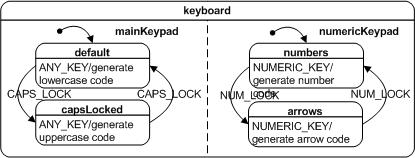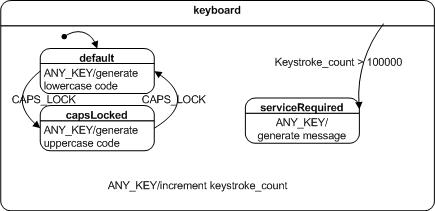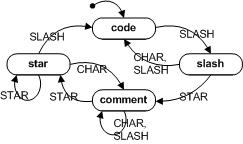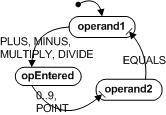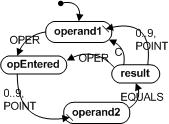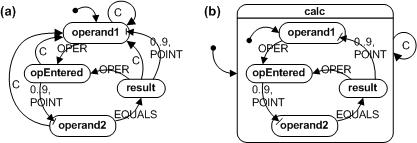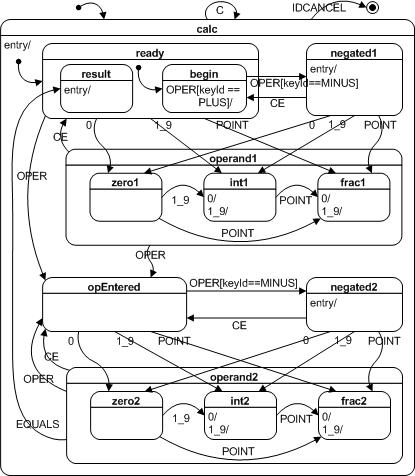- State Transition (possibly guarded)
- State Entry Actions (Moore Model)
- State Exit Actions (Moore Model)
- State Transition Actions (Mealy Model)
- Mealy: associates actions with state transitions
- Moore: associates actions with states
- Activity graph aka flowchart: no triggers, just an unstoppable computational flow
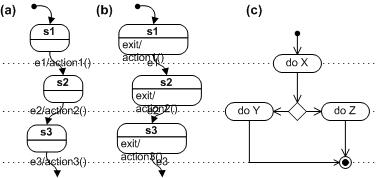
- Moore Model - Transition is RTC
- Concurrency is at the state level, not the substate level

